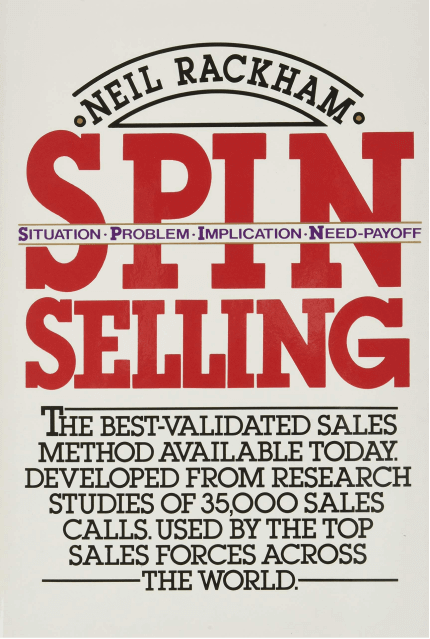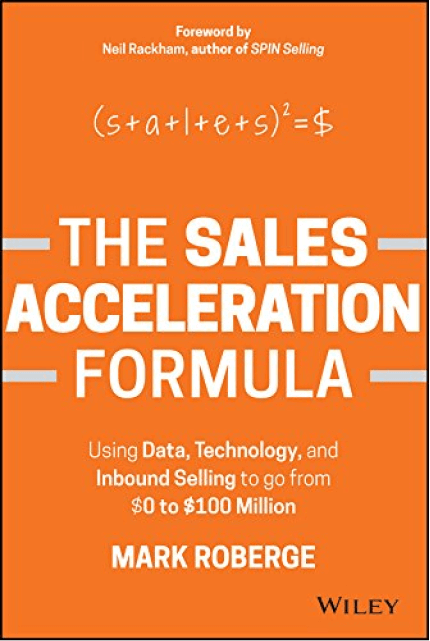



Science or Art?
Well, Selling is both!
Sales is an art that requires the ability to form good relationships with prospects & also a science that enables the development of successful, repeatable strategies based on numbers and product knowledge.
To be great at sales, you need to care about people as the emotional beings they are while also caring about the analytical side of measuring and evaluating human behavior and decision-making. Analogically, a salesperson is no less than a Doctor who diagnoses all the needs of a prospect & prescribes solutions based on the same.
During the initial phase of being a salesperson, success would largely depend on your attitude (70%) rather than aptitude (30%)
One of the most common mistakes made by a salesperson is to rely heavily on their assumptions regarding the needs and wants of their prospective buyers. As a result, they directly start pitching to buyers without even analyzing the context of their problem.
Whenever a person asks you to sell a pen, what’s your first response? Start exaggerating about a pen you find worthy? Or Did you take a pause & ask them regarding why, when, & what kind of pen they prefer?
Probing your prospect in advance helps you to pinpoint all the wants & needs of a buyer. While the basic needs are timeless & universal, talking to buyers reveals their wants. You’ll often find that people’s declared preferences are far different from their revealed preferences.
How can somebody know what they want if they haven’t experienced it yet? Thus, by probing, a salesperson can understand the prospect’s exact psychology & situations in detail. And match them with the correct solutions & offer great deals.
Has your name ever been on a salesperson's call list?
Did you receive a lot of telecalls every day?
In the modern capitalized world, a buyer gets almost 10-15 telemarketing calls per day. We can’t imagine how hard it is to listen to these monotonous voice calls. It is enough to piss off the buyer if you’re the 16th one.
So, when everyone is trying to sell, then how does one sound different? How to capture buyer’s interest?
The answer is to apply a Buyer Context Oriented approach when you make the first move. The idea is to add some value to your prospect’s life & not just directly pitch them your product or service.
Your marketing team has acquired the leads by using quality educational content that is highly relevant to the buyer’s context. The best way to go ahead would be to try to go through the prospect’s activities & think about the problems the buyer is looking to solve.
“Always do your best. What you plant now, you will harvest later.”
- Og Mandino
Then call them up & state how you’re able to solve their problems. The buyer now perceives your company as friendly, smart, helpful, and relevant. Compare this approach to the traditional stream of elevator pitches. Even though the above approach is time consuming, it leads to more conversion but isn't every business looking for this?
So, tell us which kind of salesperson would you rather engage?
That's one of the best pieces of advice I learned from my Sales Trainer during my initial days at work. A buyer is not just a customer but also a retail investor to the company. Similarly, a prospect is a future investor to a salesperson.
Even if you didn't have the right product for them, it's crucial to avoid confrontation and offer alternatives instead of just saying No. The approach should always be towards helping out the prospects in making better choices to build deep bonds with them.
The more they trust a salesperson, the more they are likely to buy from them in the future. The prospects can even give high potential referrals.
Society can't flourish if it looks down upon its wealth creators. The Salespeople are the ones who bring fuel to run the Engine (Startup/Company). We call that fuel - Revenue.
They are the soldiers of an organization who work days & nights, always on their feet, entire weight on their shoulders, at times even without week offs, so that the engine remains functional.
My little advice to all young Entrepreneurs & Managers would be to not give up on them effortlessly. It's amazing when one of your new Sales hires comes out of training crushing the phones, exceeding quota after quota, and maintaining a great attitude.
“Growth and comfort do not coexist.”
- Ginni Rometty
Unfortunately, not all hires work out that way. The weak salespeople need some effective coaching & hand-holding. Pick a deficiency in a salesperson's process, coach them on it, and check in with them the next day. If an improvement is visible and it appears to stick, that's a promising sign. However, if the salesperson doesn't apply the coaching, then that is a bad sign.
If Apple had been like any other computer company, a marketing or sales message from them might have sounded like this - "We make great computers, they're beautifully designed and user friendly. Wanna buy one?"
But how Apple actually communicates - "Everything we do, we believe in challenging the status quo, we believe in thinking differently. The way we challenge the status quo is by making our products beautifully designed, simple to use, and user-friendly. We just happen to make great computers. Wanna buy one?"
Most of the salespeople only explain what they do & how they do it. But one should always start with Why, then How, and then finally What. Make people believe what you believe before you directly pitch them your product. This process will help a salesperson in winning the gut & trust of a prospect.
Every salesperson has the opportunity to be perceived as a thought leader by his potential buyers. Social media presents an opportunity for all salespeople to be perceived as trusted advisors by their buyers.
Salespeople should take some time normally spent prospecting and reallocate it to social media participation. The rewards are greater.
For example, write a blog article about a question your buyers frequently ask you or share posts & status from other thought leaders.
Modern selling feels less like a seller or buyer relationship and more like a doctor or patient relationship. When a doctor prescribes a medication, you don’t say, “Let me think about it” or “Can I get a discount?” You take the pills.
Buying journey starts with a buyer discovering a problem that he would like to solve. From there, the buyer may begin educating himself about the problem and the possible solutions (product or service) available to resolve it.
The buyer may eventually create a shortlist of solutions to evaluate. The buyer may pilot one of the solutions. The buyer may assemble an ROI analysis on the cost and benefits of purchasing the solution. All of these steps represent possible stages in the buyer journey.
The sales methodology should be in sync with the buyer journey. Once the buyer journey is defined, the salesperson can begin prospecting.
Prospecting will lead to a "connect call" with the potential customer and establish a rapport with the prospect. If the "connect call" is successful, the potential customer may agree to a follow-up "discovery call." The discovery call may lead to a presentation of the product/service.
Hubspot (an American developer and marketer of software products for inbound marketing, sales, and customer service) came out with a formal regression analysis correlating the hiring characteristics with post-hire sales success.
The results from the first model suggested that the traits traditionally associated with salespeople, such as aggression, high pressure, and strong objection handling ability had the worst correlation with success. Why?
The internet's rise in prominence has caused a shift in power from the salesperson to the buyer. With this shift in power, buyers will no longer tolerate being strong-armed into a purchase.
They will respond to salespeople who are intelligent, helpful, and respectful of their needs. Five traits correlated most significantly with sales success: Coachability, Curiosity, Prior Success, Intelligence, Work Ethic.
Buyers should not be asked to understand the salesperson's solution and how it can help with their own goals. Instead, the salesperson should understand the buyers' goals and how his own solution can help achieve those goals.
A smart salesperson needs to transform their product’s generic messaging into a customized pitch that resonates with the buyer, addresses the buyer's needs, frequently asked counters, and uses the buyer's terminology.
Don’t describe features. Describe the solved path.
Break down the Offer Price into cost per day/month/year & how they save money. Anticipate the buyer's fears and prepare logical answers to overcome their fears.
“Become the person who would attract the results you seek.”
- Jim Cathcart
The best-trained salespeople have experienced the day-to-day job of their potential customers. The modern form of selling requires the salesperson to truly understand their customer what it's like to be in their shoes.
The exercise of calling, emailing, and meeting with a potential customer is often referred to as Prospecting. The purpose is to build a strong relationship with them by giving them value - True Value.
Education is one of the best ways to do this.
If someone is thinking of buying or wants to learn, they will have more trust in their educator, and they will be thankful for being concise and saving them time. It allows them to warm up to the idea of buying. The usual method most fail with is "like asking someone to marry you on a first date!"
In short, give your prospects a High-Value Content Offer. It could be long-form copywriting (as long as it is engaging & entertaining) with some clickbait titles (statistics shows that it works).
Other forms of HVCO are Free Consultations, Videos, Courses, Toolkits, Infographic, Assessments. The HVCO's should have - Great Tittle; Bullet points of the value offering; Visual representation of what is on offer; Contact Details.
Introduction:Whenever you strike a conversation with a prospect, the first thing they do is to judge you in the first few minutes. So, please state a proper introduction about you & how you can be helpful to them. Clearly define the time and the subject/agenda/deliverables of the discussion.
Probing:Please refer to #2 
Discussion: Stop talking about your product, company from the beginning. Highlight the problems & talk in detail about how they have tried to fix the problems before. Customers only care about themselves. Only after listening and understanding, talk about how you can help.
Get their trust, show that you are an expert. Consult with them, give them some tips, or make a plan.
Product Mapping: Mention the features, advantages & benefits of your product. Create a table of all your features. Then write the benefits of all of those features. It should be like connecting the dots. From this, you can create your outstanding offer.
Offer: Give one great Offer you're sure about. Never give too many alternatives to a buyer. It leads to confusion. Have your lowest price offer, and if you are asking for a lot, split it into multiple payments as money is crucial for everyone today.
Demonstrate the product, specifically to their problem and how it is different from the competitors. State the guarantees, expiring offers, time limits, and availability.
Life forces are the 8 powerful and fundamental desires that are responsible for all the sales in the human history. All these foundational desires are common to everyone.
All these desires are biologically programmed inside us by default. They are the powerful triggers that drive actions.
As per Whitman, human beings are biologically programmed with the following eight desires:







Write a personal 1-minute pitch to communicate about yourself. It could be about your work, experience, and interest. Pitch piques curiosity.
Benefits Sell, Features Don't. Make a Table of features and benefits of all the possible products you use in your daily life.
It’s for anyone who wants to build confidence and overcome the fear of rejection. How? Seek rejections by requesting strangers for 100 days!
Buyer personas are representations of your ideal customers based on data and research. Write buyer’s persona for 5 different businesses.